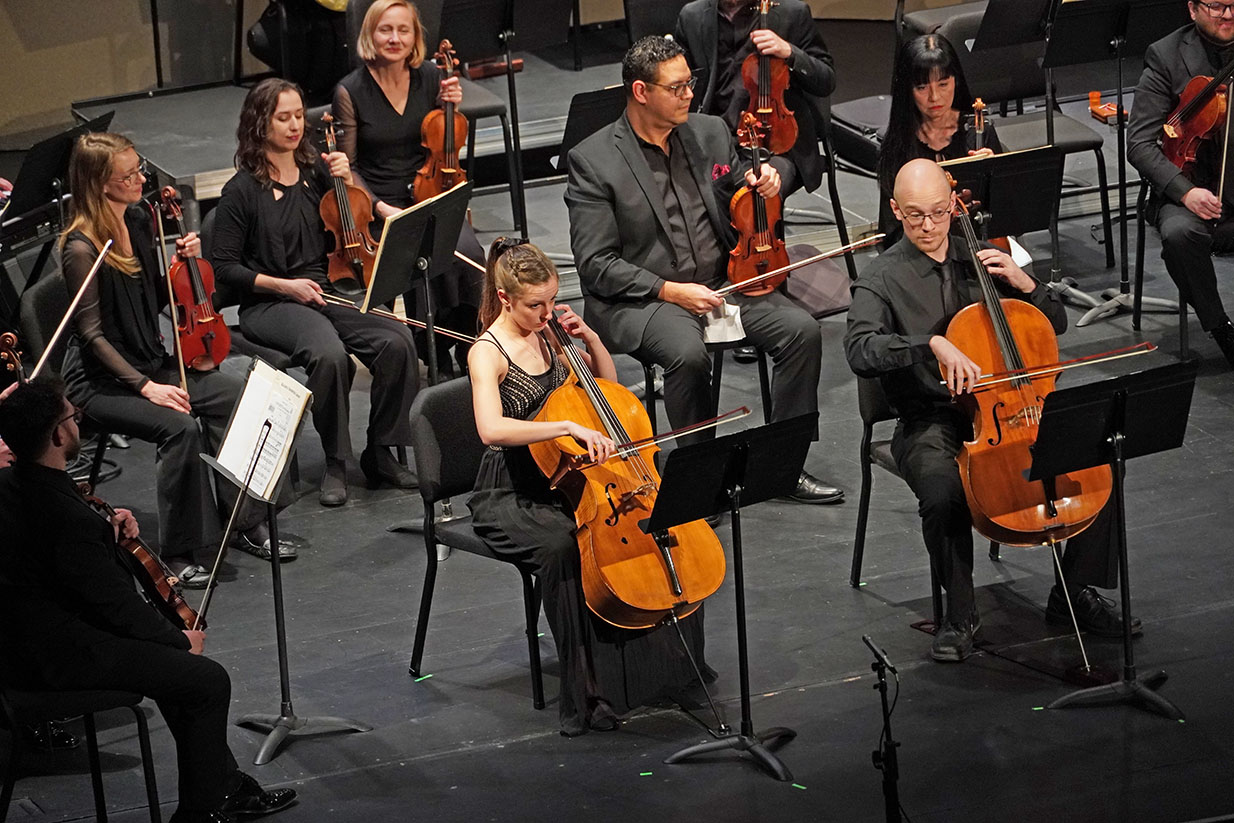The booking of guest conductors is an important part of symphony orchestra programming, a process that allows the orchestra’s music director some time off to conduct elsewhere and reciprocally, puts a fresh face and different approach in front of the hometown orchestra. This season, March is guest conductor month for the Knoxville Symphony Orchestra and this month’s Chamber Classics opportunity on Sunday afternoon at the Bijou Theatre went to Michelle di Russo, currently Associate Conductor with North Carolina Symphony.

Di Russo made an immediate impression with the opener, the Overture to Rossini’s L’italiana in Algeri (The Italian Girl in Algiers). While it would be futile to look too deeply into this delightfully entertaining and energetic romp, it brilliantly accomplishes its purpose as representing the opera’s flavor and as a standalone warmup piece of music. Along the way, pizzicato strings, charming oboe passages, and some notable crescendos provided Di Russo and the orchestra with the opportunity to break the ice and impress everyone with crisply punctuated dynamics that are a part of the composer’s controlled frenzy.
The woodwinds and brass left the stage to the strings for the next two works, the first of which was an intriguing 1990 work by the Venezuelan Aldemaro Romero, Fuga con Pajarillo. The work was a delight of South American rhythms and syncopation mixed with somewhat complex contemporary fugue structures. This short piece was a delicious challenge for conductor and orchestra, one that was well met.
One of the features of the KSO’s Chamber Classics Series is its use of musicians from the orchestra in solo roles. Deserving the applause and bravi here were KSO cellists Sarah Senn and Adam Ayers performing Vivaldi’s Concerto for Two Cellos in G minor, RV 531. Senn and Ayers handled the first Allegro movement’s virtuosic patterns of statement and imitation with a fun sense of instrumental conversation. The final Allegro movement was a beautifully played take on alternating rhythms, not unlike a swaying wagon on a Baroque-era cobbled street.
The closing work on the program was Mendelssohn’s “Italian” Symphony, a work that asks of its conductor and orchestra a driving energy and lively tunefulness. This, and more, it received from di Russo and the KSO with a performance that was joyfully expansive and balanced. Interestingly, this familiar work still had room for subtle surprises that added to the finale’s exhilaration, perhaps owing to the clean acoustics of the Bijou Theatre that reveal tonal combinations that may be hidden in larger halls.
Coincidentally, next week’s Masterworks concert pair again offers a guest conductor, Vinay Parameswaran, and a cello soloist, Thomas Mesa, on a program that includes Pyotr Ilyich Tchaikovsky’s Rococo Variations and Antonín Dvořák’s Symphony No. 8.








